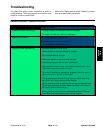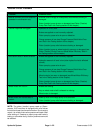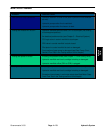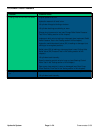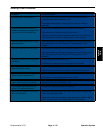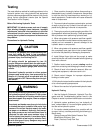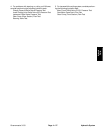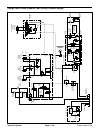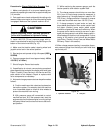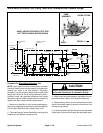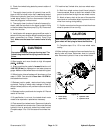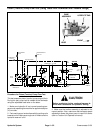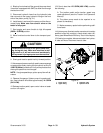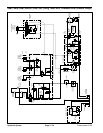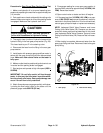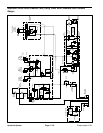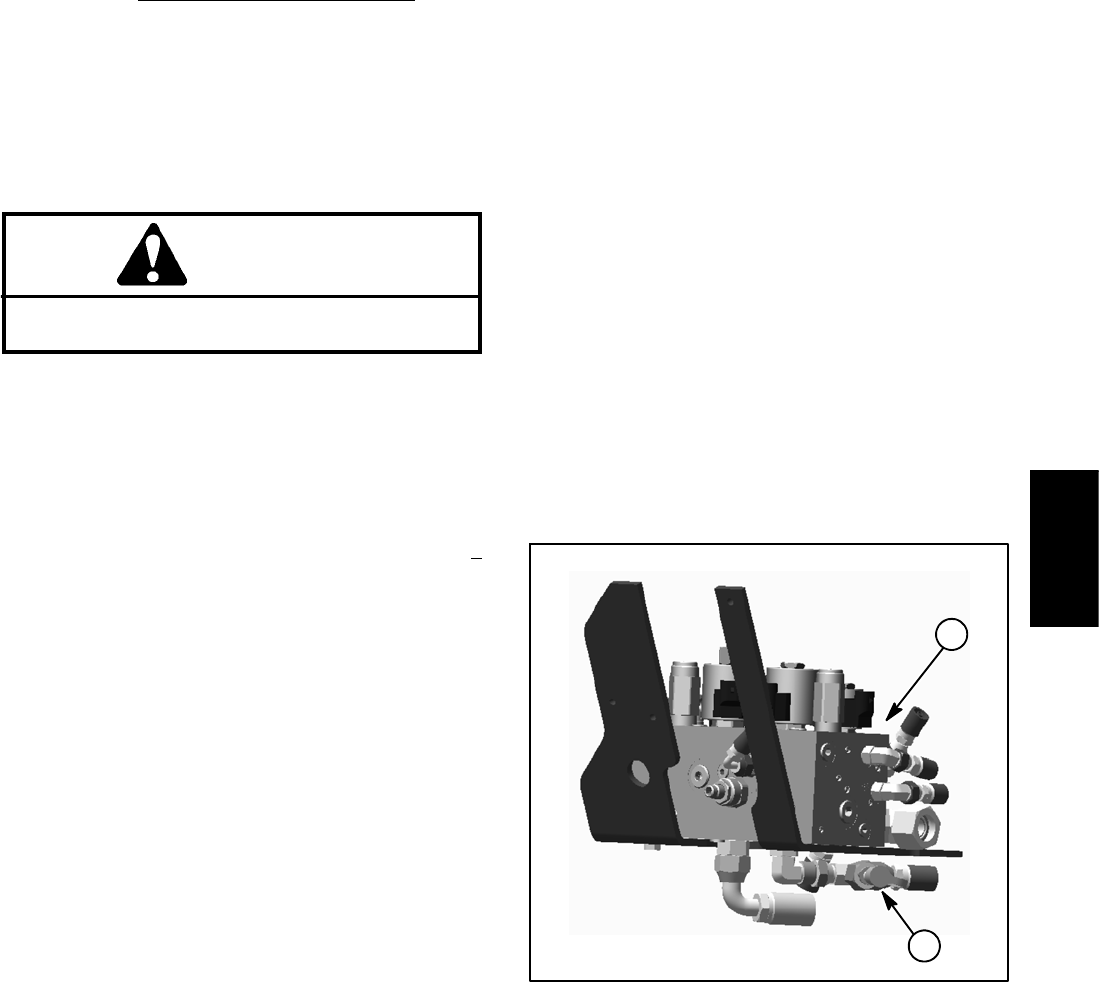
Greensmaster 3150 Hydraulic SystemPage 4 -- 29
Procedure for Charge Relief Valve Pressure
Test
1. Make sure hydraulic oil is at normal operating tem-
perature by operating the machine for approximately ten
(10) minutes.
2. Park machine on a levelsurface withthe cutting units
lowered. Make sure engine is off and the parking brake
is engaged. Make sure the hydraulic reservoir is full.
CAUTION
Before continuing further, read and become fa -
miliar with Precautions for Hydraulic Testing.
3. Install 1000 PSI (70 bar) pressure gauge with hy-
draulic hose attached to test port in the tee fitting on the
bottom of the control manifold (Fig. 19).
4. Make sure that traction pedal, steering wheel and
joystick control are in the neutral position.
5. Start engine and operate at high idle speed (2850 +
50 RPM).
6. Pressure gauge should read approximately 100 to
150PSI(7to10bar).
7. Shut off engine. Record test results.
8. If specification is not met, remove piston pump back
plate assembly that contains the chargerelief valve(see
Piston (Traction) Pump Service in the Service and Re-
pairs section of this chapter). Repair or replace relief
valve components as necessary.
9. Adynamic charge pressure test canbe performed as
follows:
A. Position machine so that a load can be placed on
the traction system. For example, chain the machine
to an immovable object or chock all drive wheels to
prevent the machine from moving.
B. With pressure gauge still connected to control
manifold test port, sit in the operator seat, start the
engine and movethrottle so engine isrunning athigh
idle speed. Move functionalcontrol lever to the trans-
port position.
C. While monitoring the pressure gauge, push the
traction pedal to allow traction system load.
D.Thechargepressureshoulddropnomorethan
20% from no--load charge pressure measured in
step 6 above (e.g. if charge pressure in step 6 is 125
PSI (9 bar), charge pressure in forward or reverse
under load should be more than 100 PSI (7 bar).
E. If charge pressure is good under no load, but
drops below specification when under traction load,
the piston (traction) pump and/or wheel motors
should be suspected of wear and inefficiency. When
thepumpand/ortractionmotor(s)arewornordam-
aged, the charge pump is not able to keep up with in-
ternal leakage in traction circuit components. Further
testing of the traction circuit should be completed
(see Piston (Traction) Pump Flow and Wheel Motor
Efficiency Tests in this section).
10.When charge pressure testing is complete, discon-
nect pressure gauge from the test port and install dust
cap on test port.
1. Hydraulic manifold 2. Test port
Figure 19
1
2
Hydraulic
System



